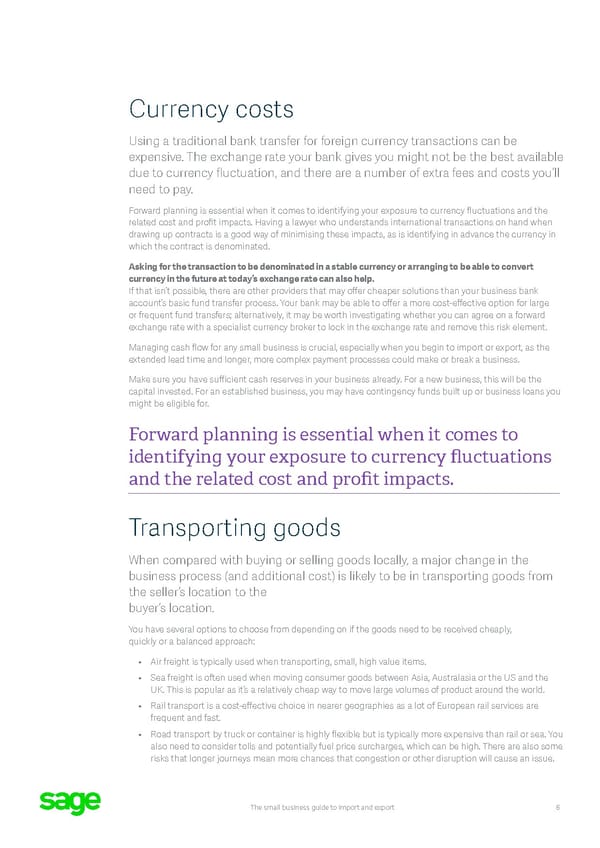Currency costs Using a traditional bank transfer for foreign currency transactions can be expensive. The exchange rate your bank gives you might not be the best available due to currency fluctuation, and there are a number of extra fees and costs you’ll need to pay. Forward planning is essential when it comes to identifying your exposure to currency fluctuations and the related cost and profit impacts. Having a lawyer who understands international transactions on hand when drawing up contracts is a good way of minimising these impacts, as is identifying in advance the currency in which the contract is denominated. Asking for the transaction to be denominated in a stable currency or arranging to be able to convert currency in the future at today’s exchange rate can also help. If that isn’t possible, there are other providers that may offer cheaper solutions than your business bank account’s basic fund transfer process. Your bank may be able to offer a more cost-effective option for large or frequent fund transfers; alternatively, it may be worth investigating whether you can agree on a forward exchange rate with a specialist currency broker to lock in the exchange rate and remove this risk element. Managing cash flow for any small business is crucial, especially when you begin to import or export, as the extended lead time and longer, more complex payment processes could make or break a business. Make sure you have sufficient cash reserves in your business already. For a new business, this will be the capital invested. For an established business, you may have contingency funds built up or business loans you might be eligible for. Forward planning is essential when it comes to identifying your exposure to currency fluctuations and the related cost and profit impacts. Transporting goods When compared with buying or selling goods locally, a major change in the business process (and additional cost) is likely to be in transporting goods from the seller’s location to the buyer’s location. You have several options to choose from depending on if the goods need to be received cheaply, quickly or a balanced approach: • Air freight is typically used when transporting, small, high value items. • Sea freight is often used when moving consumer goods between Asia, Australasia or the US and the UK. This is popular as it’s a relatively cheap way to move large volumes of product around the world. • Rail transport is a cost-effective choice in nearer geographies as a lot of European rail services are frequent and fast. • Road transport by truck or container is highly flexible but is typically more expensive than rail or sea. You also need to consider tolls and potentially fuel price surcharges, which can be high. There are also some risks that longer journeys mean more chances that congestion or other disruption will cause an issue. The small business guide to import and export 6
 Sage Small Business Guide: Import and Export Flipbook Page 5 Page 7
Sage Small Business Guide: Import and Export Flipbook Page 5 Page 7